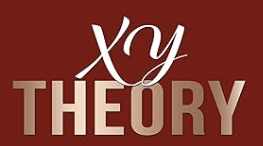Dating can be an exciting but sometimes overwhelming journey, especially when you’re searching for a long-term partner. With so many options, how do you know when to stop looking and commit to someone? Enter the Optimal Stopping Rule—a mathematical concept that can offer some guidance on when to settle down in the world of dating. This blog post explores what the Optimal Stopping Rule is, how it applies to dating, and how you can use it to make more confident decisions in your search for love.
What Is the Optimal Stopping Rule?
The Optimal Stopping Rule is a principle derived from mathematics and statistics, particularly in the context of decision-making. It’s designed to help you determine the best time to make a decision when faced with a series of options over time. In essence, the Optimal Stopping Rule suggests that you should sample a certain percentage of the available options without committing to any, then choose the next option that is better than all the ones you’ve previously sampled. This strategy maximizes your chances of making the best possible choice.
Applying the Optimal Stopping Rule to Dating
So, how does this mathematical concept translate to the world of dating? Here’s how you can apply the Optimal Stopping Rule to your romantic life:
- Set a Reasonable Number of Dates: First, estimate the number of potential partners you might meet over a certain period—say, a year or a few months. This number doesn’t have to be exact, but it helps to have a ballpark figure in mind. For example, you might decide that you’re likely to go on 20 dates in the next six months.
- Observe the First 37%: According to the Optimal Stopping Rule, you should spend the first 37% of your dating period observing and getting to know different people without making a long-term commitment. For instance, if you plan to go on 20 dates, you’d spend the first seven or eight dates simply evaluating your options.
- Establish Your Standards: During this initial phase, pay attention to what you like and dislike in a partner. This period is about learning what truly matters to you in a relationship. You’re not just looking for someone who’s good enough—you’re identifying the qualities that make someone a strong match for you.
- Choose the Next Best Match: After you’ve gone through the observation phase, the next person you date should have most of the likes and not a lot of dislikes based on your observations. By holding out for a partner who meets or exceeds the standards set by those you’ve dated previously, you increase your chances of finding someone who is a great fit.
- Avoid the Fear of Missing Out: One of the challenges in dating is the fear of missing out on someone better. The Optimal Stopping Rule helps alleviate this fear by providing a structured approach to decision-making. It encourages you to make a confident choice when you meet someone who meets your criteria, rather than endlessly searching for “the one.”
Using the Optimal Stopping Rule in a Healthy Way
While the Optimal Stopping Rule can be a helpful tool, it’s important to use it in a way that complements your natural instincts and emotions. Here’s how to balance the rule with the realities of dating:
- Be Flexible: The rule is a guideline, not a strict formula. If you meet someone early in your dating journey who feels like a great match, don’t hesitate to explore that connection further.
- Stay Open-Minded: While it’s important to have standards, staying open-minded and adaptable is key. People can surprise you, and sometimes the right partner might not fit your initial checklist perfectly.
- Trust Your Gut: Alongside the Optimal Stopping Rule, trust your intuition. Relationships are deeply personal, and your gut feelings are an important part of making the right decision.
- Communicate Clearly: When you do find someone you’re interested in, communicate your feelings and intentions clearly. The rule can help you make a choice, but healthy communication is essential for building a strong relationship.
The Optimal Stopping Rule offers a unique and structured approach to dating that can help you navigate the often overwhelming process of finding a partner. However, it’s important to remember that dating is not just a numbers game—emotions, intuition, and communication all play a crucial role in building a meaningful connection. Use the Optimal Stopping Rule as a tool, but let your heart and mind guide you in your search for love.

